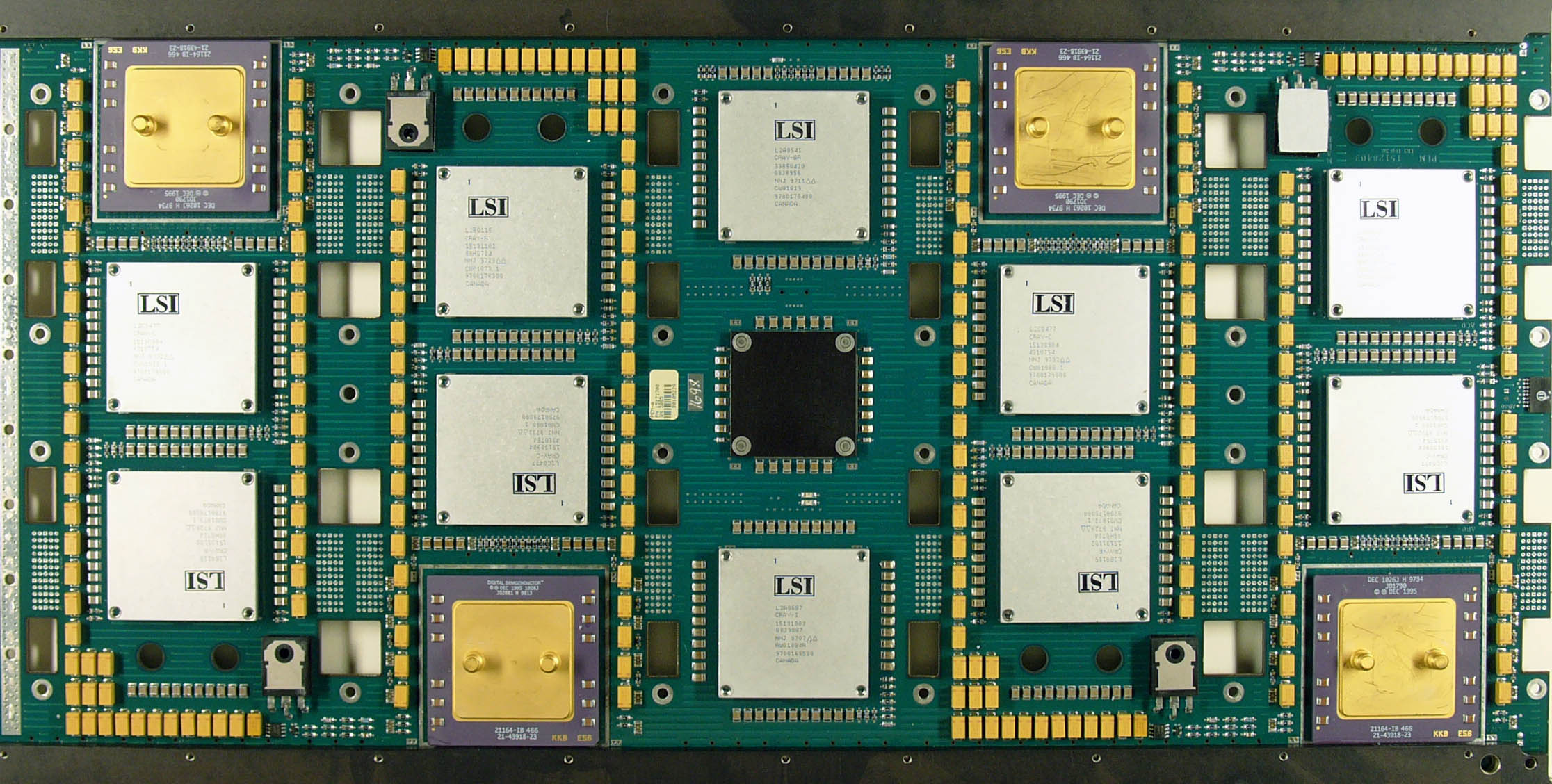|
Cray Operating System
The Cray Operating System (COS) is a Cray Research operating system for its now-discontinued Cray-1 (1976) and Cray X-MP supercomputers. It succeeded the Chippewa Operating System (shipped with earlier Control Data Corporation CDC 6000 series and 7600 computer systems), and was the Cray main OS until replaced by UNICOS in the late 1980s. COS was delivered with Cray Assembly Language (CAL), Cray FORTRAN (CFT), and Pascal. Design As COS was written by ex-Control Data employees, its command language and internal organization bore strong resemblance to the CDC SCOPE operating system on the CDC 7600 and before that EXEC*8 from CDC's earlier ERA/Univac pedigree. User jobs were submitted to COS via front-end computers via a high-speed channel interface, and so-called ''station software''. Front end stations were typically large IBM or Control Data mainframes. However the DEC VAX was also a very popular front-end. Interactive use of COS was possible through the stations, but most u ... [...More Info...] [...Related Items...] OR: [Wikipedia] [Google] [Baidu] |
Cray Research
Cray Inc., a subsidiary of Hewlett Packard Enterprise, is an American supercomputer manufacturer headquartered in Seattle, Washington. It also manufactures systems for data storage and analytics. Several Cray supercomputer systems are listed in the TOP500, which ranks the most powerful supercomputers in the world. Cray manufactures its products in part in Chippewa Falls, Wisconsin, where its founder, Seymour Cray, was born and raised. The company also has offices in Bloomington, Minnesota (which have been converted to Hewlett Packard Enterprise offices), and numerous other sales, service, engineering, and R&D locations around the world. The company's predecessor, Cray Research, Inc. (CRI), was founded in 1972 by computer designer Seymour Cray. Seymour Cray later formed Cray Computer Corporation (CCC) in 1989, which went bankrupt in 1995. Cray Research was acquired by Silicon Graphics (SGI) in 1996. Cray Inc. was formed in 2000 when Tera Computer Company purchased the Cray Res ... [...More Info...] [...Related Items...] OR: [Wikipedia] [Google] [Baidu] |
Cray Assembly Language
Cray Inc., a subsidiary of Hewlett Packard Enterprise, is an American supercomputer manufacturer headquartered in Seattle, Washington. It also manufactures systems for data storage and analytics. Several Cray supercomputer systems are listed in the TOP500, which ranks the most powerful supercomputers in the world. Cray manufactures its products in part in Chippewa Falls, Wisconsin, where its founder, Seymour Cray, was born and raised. The company also has offices in Bloomington, Minnesota (which have been converted to Hewlett Packard Enterprise offices), and numerous other sales, service, engineering, and R&D locations around the world. The company's predecessor, Cray Research, Inc. (CRI), was founded in 1972 by computer designer Seymour Cray. Seymour Cray later formed Cray Computer Corporation (CCC) in 1989, which went bankrupt in 1995. Cray Research was acquired by Silicon Graphics (SGI) in 1996. Cray Inc. was formed in 2000 when Tera Computer Company purchased the Cray Rese ... [...More Info...] [...Related Items...] OR: [Wikipedia] [Google] [Baidu] |
Cray Software
Cray Inc., a subsidiary of Hewlett Packard Enterprise, is an American supercomputer manufacturer headquartered in Seattle, Washington. It also manufactures systems for data storage and analytics. Several Cray supercomputer systems are listed in the TOP500, which ranks the most powerful supercomputers in the world. Cray manufactures its products in part in Chippewa Falls, Wisconsin, where its founder, Seymour Cray, was born and raised. The company also has offices in Bloomington, Minnesota (which have been converted to Hewlett Packard Enterprise offices), and numerous other sales, service, engineering, and R&D locations around the world. The company's predecessor, Cray Research, Inc. (CRI), was founded in 1972 by computer designer Seymour Cray. Seymour Cray later formed Cray Computer Corporation (CCC) in 1989, which went bankrupt in 1995. Cray Research was acquired by Silicon Graphics (SGI) in 1996. Cray Inc. was formed in 2000 when Tera Computer Company purchased the Cray Rese ... [...More Info...] [...Related Items...] OR: [Wikipedia] [Google] [Baidu] |
1975 Software
It was also declared the '' International Women's Year'' by the United Nations and the European Architectural Heritage Year by the Council of Europe. Events January * January 1 - Watergate scandal (United States): John N. Mitchell, H. R. Haldeman and John Ehrlichman are found guilty of the Watergate cover-up. * January 2 ** The Federal Rules of Evidence are approved by the United States Congress. ** Bangladesh revolutionary leader Siraj Sikder is killed by police while in custody. ** A bomb blast at Samastipur, Bihar, India, fatally wounds Lalit Narayan Mishra, Minister of Railways. * January 5 – Tasman Bridge disaster: The Tasman Bridge in Hobart, Tasmania, Australia, is struck by the bulk ore carrier , killing 12 people. * January 7 – OPEC agrees to raise crude oil prices by 10%. * January 10– February 9 – The flight of ''Soyuz 17'' with the crew of Georgy Grechko and Aleksei Gubarev aboard the ''Salyut 4'' space station. * January 15 – Alvor Agreem ... [...More Info...] [...Related Items...] OR: [Wikipedia] [Google] [Baidu] |



